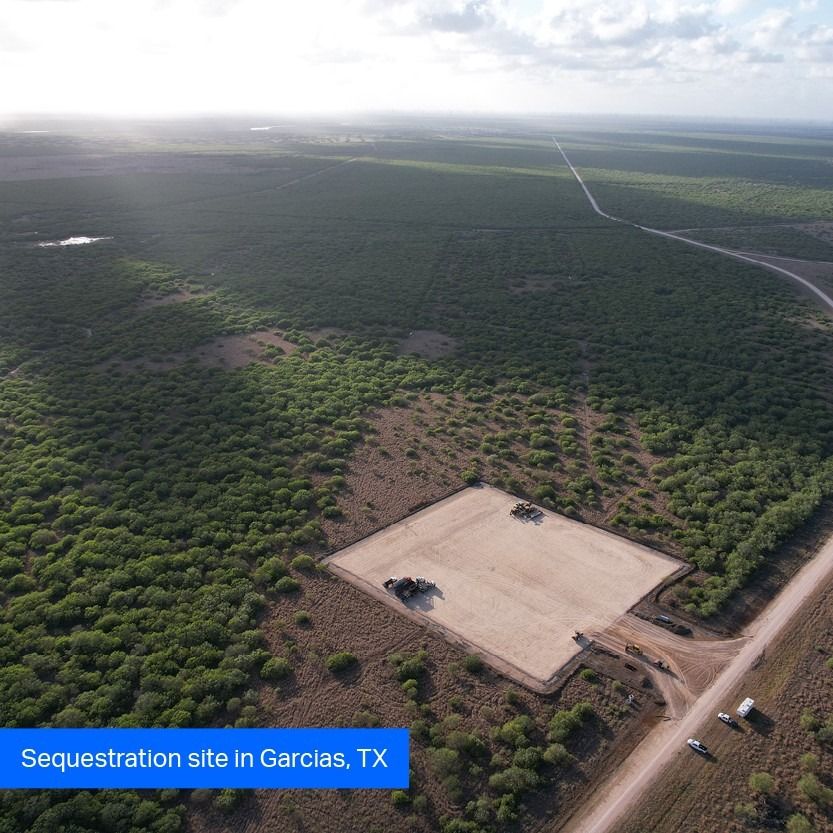
Geologic Sequestration
Sustainability
Information
First, the CO2 must be captured. This could occur in a variety of ways, including point-source capture at an industrial facility, such as a power plant or manufacturing operation. Or atmospheric CO2 could be pulled straight from the air mechanically through the use of Direct Air Capture technology. Once captured, the CO2 is purified and compressed into a supercritical phase—a state with combined properties of gas and liquid.
Next, this CO2 is injected deep below the surface via a high-integrity well and into an underground reservoir—often more than 5,000 feet below the earth’s surface. Once the CO2 reaches the reservoir, it is trapped and securely stored. The CO2 is structurally trapped within the reservoir, under a thick layer of nonporous rock, called a caprock. This caprock serves as a lid to the reservoir, isolating CO2 that is injected below it. This rock layer can be hundreds of feet thick and keeps the CO2 securely trapped.
Learn more: 1PointFive.com/geologic-sequestration
